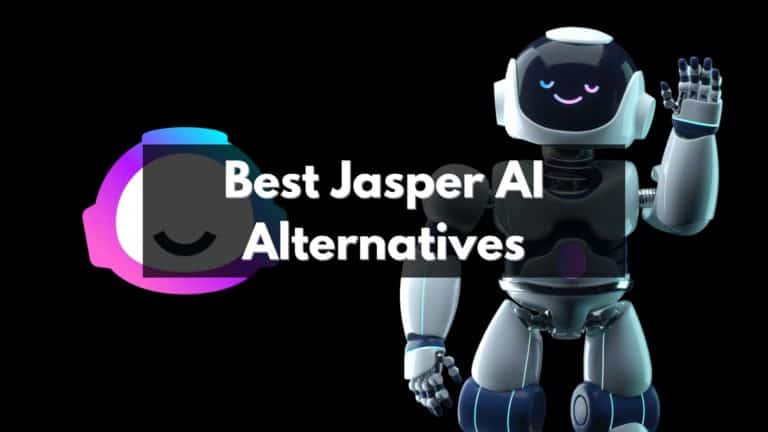Can Stealth Writer Pass Originality.ai Detection?
Are you wondering if a stealth writer can outsmart Originality.ai detection? I’ve been there too because it sounds almost impossible given the advanced technology of this tool. Through my research and personal experience, I unearthed fascinating insights on how stealth writing matches up against AI detectors like Originality.ai.
Ready for a deep dive into AI-assisted writing and plagiarism checkers? Let’s get started!
Key Takeaways
- Originality.ai Detection is a powerful AI tool that uses advanced algorithms to analyze text and detect instances of plagiarism.
- Stealth writing, including AI – generated content, can still be recognized by sophisticated detection technology, making it challenging to bypass tools like Originality.ai.
- Attempting to bypass detection carries severe risks and consequences, such as academic sanctions and legal repercussions. It’s important to prioritize authenticity and originality in written work.
- To ensure originality and avoid plagiarism, writers should properly cite and reference all sources used. Paraphrasing and summarizing are effective techniques for creating unique content while acknowledging the original source.
Understanding Originality. ai Detection Technology
Originality.ai Detection is a cutting-edge technology that analyzes text to determine its originality and detect any instances of plagiarism.
How Originality.ai Detection Works
Originality.ai uses advanced machine learning technology to analyze digital content. This artificial intelligence tool scans through every line of text, matching patterns and checking for similarities with other documents in its vast database.
The algorithm is designed to identify even the slightest hint of unoriginal content or instances of plagiarism. Another fascinating aspect is that it can detect AI-generated writing from tools like ChatGPT alongside regular human-written pieces.
Because it focuses on text structures rather than individual words, replacing a few phrases or using synonyms won’t help bypass this detection system. It means that only truly original work passes the Originality.ai check, ensuring integrity and authenticity in the world of digital content creation.
Features and Capabilities
Originality.ai Detection technology offers several powerful features and capabilities that make it highly accurate in detecting unoriginal content. Some of its key features include:
- Advanced AI Algorithms: Originality.ai uses sophisticated algorithms designed to analyze text and identify patterns that indicate potential plagiarism or unoriginal content.
- Extensive Database: The tool has a vast database of sources, including academic journals, books, websites, and other written materials, against which it compares the submitted content.
- Text Similarity Analysis: Originality.ai performs comprehensive text similarity analysis to identify matches or similarities with existing sources, ensuring the detection of even subtle instances of plagiarism.
- Real-Time Detection: The tool provides instant feedback on the originality of the submitted work, allowing writers to make necessary revisions before finalizing their content.
- Multiple Language Support: Originality.ai supports multiple languages, making it suitable for writers working in various linguistic contexts.
- User-Friendly Interface: The tool is designed with a user-friendly interface that enables easy navigation and efficient use by both experienced and novice writers.
- Integration with Writing Platforms: Originality.ai seamlessly integrates with popular writing platforms like Google Docs, providing convenience and accessibility during the writing process.
- Accuracy and Reliability: Numerous studies have shown that Originality.ai consistently achieves high accuracy in detecting unoriginal content, making it a reliable tool for detecting plagiarism.
Can Stealth Writer Pass Originality. ai Detection?
The limitations of stealth writing and the risks involved in attempting to bypass Originality.ai detection are worth exploring.
Exploring the Limitations of Stealth Writing
I have delved into the limitations of stealth writing to understand its feasibility in passing AI detection tools like Originality.ai. Despite the advancements in AI-generated content and tools like ChatGPT, these writings can still be recognized by sophisticated algorithms.
The accuracy of detection technology has improved significantly over time, making it a challenging task for stealth writers to go undetected. Additionally, plagiarism checkers specifically designed to identify AI-assisted writing further minimize the chances of bypassing detection.
It is crucial for writers looking to maintain authenticity and originality of their work to seek alternative methods rather than relying on stealth techniques that may lead to severe consequences.
Risks and Consequences of Attempting to Bypass Detection
Attempting to bypass detection in AI writing carries significant risks and consequences. Plagiarism checkers, like Originality.ai, have advanced algorithms that are designed to detect unoriginal content and AI-generated text.
If caught using stealth writing techniques, it can lead to severe penalties such as academic sanctions, loss of credibility, and legal repercussions. It is crucial to prioritize authenticity and originality in written work while utilizing proper citation methods to avoid the potential negative outcomes associated with attempting to bypass detection.
Ethical Considerations
Ethical considerations surrounding the use of AI writing tools include academic integrity, plagiarism and intellectual property rights, as well as the importance of authenticity and originality.
Academic Integrity
Academic integrity is a crucial aspect when it comes to writing, regardless of whether it’s AI-generated content or written by human authors. It encompasses the principles of honesty, authenticity, and originality in academic work.
Maintaining academic integrity means that writers should avoid any form of plagiarism and uphold intellectual property rights. Creating unique and original content not only supports ethical practices but also ensures the credibility and quality of one’s work.
When using AI writing tools or engaging with AI content writers, it is essential to prioritize academic integrity to produce valuable and trustworthy material.
Plagiarism and Intellectual Property Rights
Protecting intellectual property rights and avoiding plagiarism are crucial in any form of writing, including AI-generated content. As an AI content writer, it is essential to understand the ethical considerations surrounding originality and authenticity.
Plagiarism refers to using someone else’s work without proper attribution, while intellectual property rights protect the ownership of creative works. Maintaining these principles not only upholds academic integrity but also ensures that your writing maintains its credibility and quality.
By prioritizing authenticity and respecting intellectual property rights, you can contribute to a community of writers committed to producing valuable, unique content that stands out from the rest.
Importance of Authenticity and Originality
Authenticity and originality are crucial when it comes to AI-generated content. As an AI writer, I understand the importance of providing unique and genuine text that can pass detection tools like Originality.ai.
This not only ensures academic integrity but also protects against the risks and consequences of plagiarism. By focusing on authenticity and originality, AI writers can deliver high-quality content while avoiding any suspicions or penalties related to unoriginal work.
It is essential to prioritize these aspects as we strive for accuracy in our writing.
Tips for Ensuring Originality and Avoiding Plagiarism
To ensure originality and avoid plagiarism, it is crucial to properly cite and reference all sources used in your work.
Proper Citation and Referencing
I believe that proper citation and referencing are crucial when it comes to ensuring originality and avoiding plagiarism. Here are some key tips for effective citation and referencing:
- Include a reference list: After completing your writing, compile a list of all the sources you have used. This list should include the author’s name, title of the work, publication date, and other relevant information.
- Use in-text citations: When you refer to specific ideas or information from a source within your writing, make sure to include an in-text citation. This helps attribute the information to the original author and avoid plagiarism.
- Follow a recognized citation style guide: Different disciplines use different citation styles, such as APA, MLA, or Chicago. Familiarize yourself with the appropriate style guide for your field and adhere to its guidelines for citing sources.
- Understand direct quotes vs. paraphrasing: If you directly quote someone else’s words, enclose them in quotation marks and provide an in-text citation. For paraphrased information or ideas, rephrase them in your own words while still acknowledging the original source through proper citation.
- Be consistent throughout your work: Consistency is key when it comes to citation and referencing. Ensure that you apply the same formatting, punctuation, and capitalization rules consistently across all citations and references in your writing.
Paraphrasing and Summarizing
Paraphrasing and summarizing are effective techniques for avoiding plagiarism detection by AI tools like Originality.ai. They involve rewriting information in your own words while retaining the key ideas and concepts. These methods can help you achieve originality and authenticity in your content without triggering AI recognition. By carefully rephrasing and condensing the original text, you can create unique and engaging content that meets the requirements of AI plagiarism checkers. Additionally, paraphrasing and summarizing allow you to demonstrate your understanding of the source material while still maintaining your own voice as a writer.
Use of Turnitin and Similar Tools
I have found that using Turnitin and similar tools can be a valuable strategy for writers looking to avoid AI detection. These tools offer a range of features, including text revision and plagiarism analysis, which can help ensure the authenticity of your content. By utilizing these resources, you can enhance the originality of your writing and minimize the risk of being flagged by AI plagiarism checkers. Additionally, seeking guidance from educators and writing professionals can provide valuable insights on how to improve your writing skills and create unique, high-quality content. Overall, incorporating tools like Turnitin into your writing process can significantly contribute to bypassing AI detection and maintaining originality in your work.
Seek Guidance from Educators and Writing Professionals
Educators and writing professionals can provide valuable guidance to writers who are interested in finding an AI content writer that can pass AI detection. They have expertise in identifying plagiarism and can offer insights on how to develop authentic and original content.
Educators can also provide resources, such as writing workshops or courses, to enhance writing skills. Additionally, they may recommend effective strategies for citation and referencing to avoid the risk of plagiarism.
Seeking advice from these professionals is essential for aspiring writers looking to navigate the challenges of AI detection while maintaining academic integrity.
In conclusion, seeking guidance from educators and writing professionals is crucial for individuals aiming to find an AI content writer that can successfully pass AI detection. These experts possess the knowledge required to identify potential issues related to plagiarism and can guide writers towards producing genuine and unique work.
Importance of Developing Strong Writing Skills
Developing strong writing skills is crucial, especially when it comes to avoiding AI detection. With the rise of advanced technology like Originality.ai, it’s become increasingly important for writers to create authentic and original content.
By honing your writing skills, you can effectively express your ideas without relying on AI assistance or risking plagiarism. Strong writing skills allow you to craft compelling arguments, convey information clearly, and maintain a unique voice in your writing.
So focus on improving your writing abilities and make sure your content stands out while passing AI detection with ease.
Conclusion
In conclusion, while stealth writing may offer some temporary relief from AI detection tools like Originality.ai, it is not a foolproof solution. The risks and consequences of attempting to bypass detection through plagiarized or unoriginal content far outweigh any potential benefits.
It is crucial to prioritize academic integrity, authenticity, and originality in our writing. Instead of trying to evade detection, focus on developing strong writing skills and using proper citation techniques to ensure the quality and uniqueness of your work.
FAQs
1. Can Stealth Writer pass Originality.ai detection?
Stealth Writer cannot guarantee to pass Originality.ai detection as the effectiveness of stealth writing techniques may vary depending on the sophistication of plagiarism detection algorithms.
2. How does Originality.ai detect plagiarism?
Originality.ai uses advanced algorithms that compare submitted content with a vast database of existing texts to identify similarities and potential instances of plagiarism.
3. Are there any strategies to increase the chances of passing Originality.ai detection?
While no strategy can guarantee success, using original ideas, properly citing sources, and paraphrasing rather than directly copying can help minimize similarity scores and improve the likelihood of passing Originality.ai’s plagiarism checks.
4. What are the consequences if my content fails Originality.ai’s plagiarism check?
If your content is flagged as plagiarized by Originality.ai or similar tools, it could result in academic penalties, loss of credibility, legal issues, or damage to your reputation. It is always best to ensure that your work is original and properly attributed to avoid these consequences.





